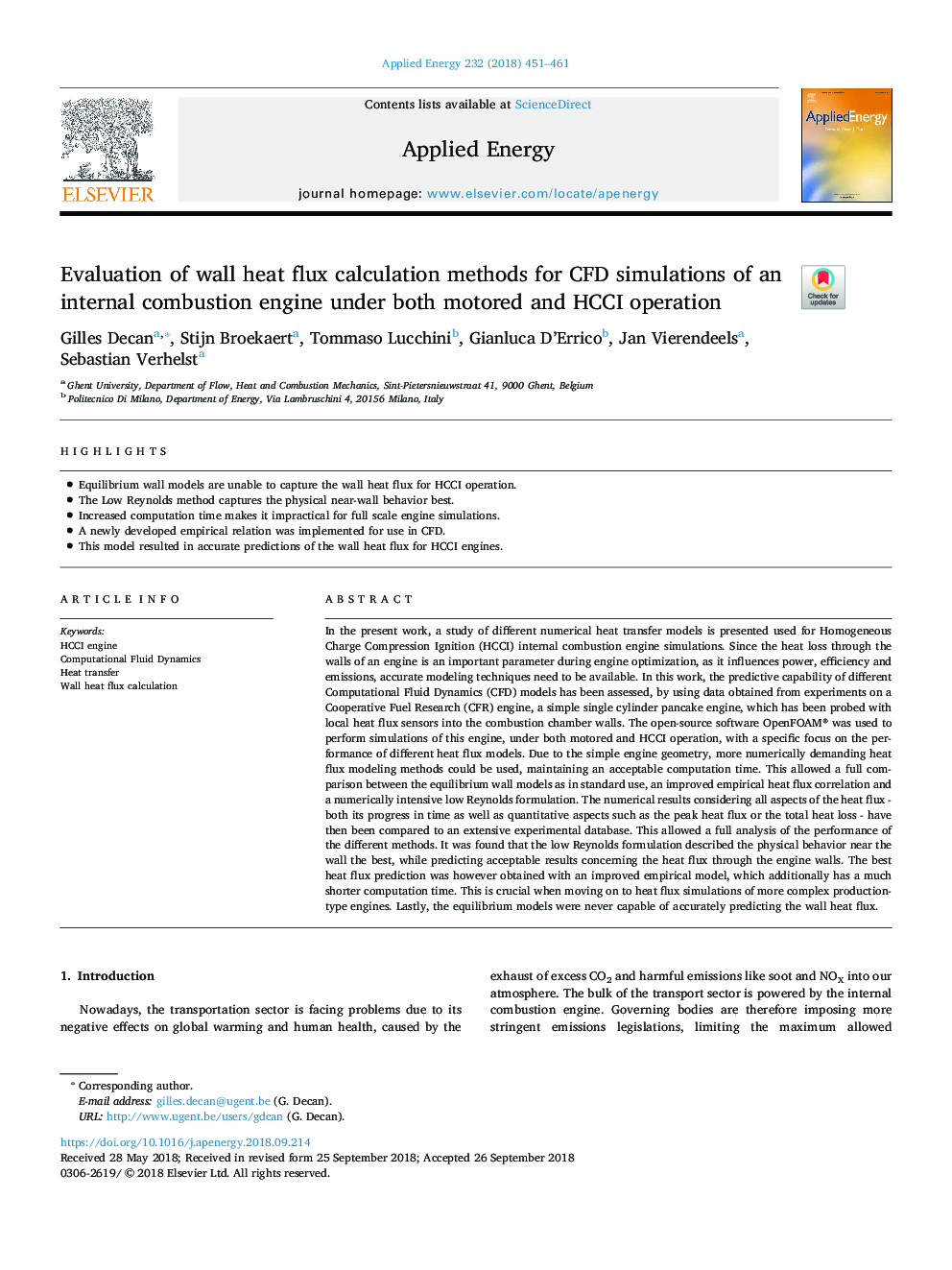| کد مقاله | کد نشریه | سال انتشار | مقاله انگلیسی | نسخه تمام متن |
|---|---|---|---|---|
| 11017571 | 1725872 | 2018 | 11 صفحه PDF | دانلود رایگان |
عنوان انگلیسی مقاله ISI
Evaluation of wall heat flux calculation methods for CFD simulations of an internal combustion engine under both motored and HCCI operation
دانلود مقاله + سفارش ترجمه
دانلود مقاله ISI انگلیسی
رایگان برای ایرانیان
کلمات کلیدی
موضوعات مرتبط
مهندسی و علوم پایه
مهندسی انرژی
مهندسی انرژی و فناوری های برق
پیش نمایش صفحه اول مقاله

چکیده انگلیسی
In the present work, a study of different numerical heat transfer models is presented used for Homogeneous Charge Compression Ignition (HCCI) internal combustion engine simulations. Since the heat loss through the walls of an engine is an important parameter during engine optimization, as it influences power, efficiency and emissions, accurate modeling techniques need to be available. In this work, the predictive capability of different Computational Fluid Dynamics (CFD) models has been assessed, by using data obtained from experiments on a Cooperative Fuel Research (CFR) engine, a simple single cylinder pancake engine, which has been probed with local heat flux sensors into the combustion chamber walls. The open-source software OpenFOAM® was used to perform simulations of this engine, under both motored and HCCI operation, with a specific focus on the performance of different heat flux models. Due to the simple engine geometry, more numerically demanding heat flux modeling methods could be used, maintaining an acceptable computation time. This allowed a full comparison between the equilibrium wall models as in standard use, an improved empirical heat flux correlation and a numerically intensive low Reynolds formulation. The numerical results considering all aspects of the heat flux - both its progress in time as well as quantitative aspects such as the peak heat flux or the total heat loss - have then been compared to an extensive experimental database. This allowed a full analysis of the performance of the different methods. It was found that the low Reynolds formulation described the physical behavior near the wall the best, while predicting acceptable results concerning the heat flux through the engine walls. The best heat flux prediction was however obtained with an improved empirical model, which additionally has a much shorter computation time. This is crucial when moving on to heat flux simulations of more complex production-type engines. Lastly, the equilibrium models were never capable of accurately predicting the wall heat flux.
ناشر
Database: Elsevier - ScienceDirect (ساینس دایرکت)
Journal: Applied Energy - Volume 232, 15 December 2018, Pages 451-461
Journal: Applied Energy - Volume 232, 15 December 2018, Pages 451-461
نویسندگان
Gilles Decan, Stijn Broekaert, Tommaso Lucchini, Gianluca D'Errico, Jan Vierendeels, Sebastian Verhelst,